Tallulah est donc l’œuvre d’un groupe qui cherche à rompre avec la malédiction des charts. En intégrant définitivement la jeune Amanda Brown dans leurs rangs, les Betweens font le pari d’enrichir leur son. Disque de la discorde, il annonce, sans le savoir, le plus beau disque du duo Grant & McLennan à savoir 16 Lovers Lane qui paraîtra quelques mois plus tard. Pour en savoir plus sur cette mutation, nous avons discuté avec Amanda Brown et Robet Vickers, deux membres du groupe. Nous avons aussi eu la chance de pouvoir questionner Colin Lloyd-Tucker, un des choristes qui œuvre sur ce disque. Visiblement nous ne sommes pas les seuls à nous intéresser à la fantastique histoire de ce disque (et de ce groupe). Dans quelques jours, le rockumentaire Right Here sera diffusé au festival du film de Sydney.
The Go–Betweens – Right Here Trailer
Discographie
The Go-BetweensColin Lloyd Tucker
Colin Lloyd Tucker est un musicien anglais à la carrière solo bien étoffée.
Comment as-tu rencontré les Go–Betweens ?
Colin Lloyd Tucker : Au cours des années 1980, j’ai beaucoup travaillé avec Simon Turner, notamment sur le projet Deux Filles. Simon m’a invité à venir faire un tour dans le studio pendant l’enregistrement de Royal Bastard du groupe The King Of Luxembourg. J’ai fait quelques harmonies sur ce disque. L’ingénieur et le co-producteur était Richard Preston. Peu de temps après, Richard a commencé à travailler sur ce qui allait devenir Tallulah. Il s’est souvenu de la façon dont nos voix ont se mariaient bien. Il nous a donc demandé de venir enregistrer quelques chœurs.
Quels sont tes meilleurs souvenirs ?
Colin Lloyd Tucker : Je me souviens que c’était très amusant. L’atmosphère était détendue. Comme c’est habituellement le cas lorsque, dans le studio, il y avait beaucoup de distractions comme le billard. J’y ai beaucoup joué avec Amanda. Elle faisait beaucoup de roues et de sauts autour de la table. Elle était très courbée… J’étais assez distrait et étonné pour perdre régulièrement.
Te rappelles-tu des jours de l’enregistrement ?
Colin Lloyd Tucker : Richard montrait la voie, Grant et Robert étaient toujours présents dans la salle de contrôle. Celui qui avait écrit la chanson sur laquelle nous travaillions nous donnait une idée de comment cela devait sonner. Nous faisions aussi des suggestions. Parfois, je chantais juste avec Simon et d’autres fois nous avons été rejoints par Amanda et Robert. Quand c’était fini, nous allions au pub à côté du studio. Il y a aussi eu une grande fête à leur appartement pour célébrer la fin de l’enregistrement de l’album. La photo de la pochette d l’album a été prise dans cet appartement.
Sur combien de chansons as-tu fais les chœurs ?
Colin Lloyd Tucker : Je pense que nous en avons fait sur 3 ou 4. Je me rappelle bien de la chanson You Tell Me, I Just Get Caught Out et de Bye Bye Pride.
Quel est ton titre préféré ?
Colin Lloyd Tucker : J’ai toujours eu une préférence pour Right Here de Grant et pour The Clark Sisters et You Tell Me.
The Go–Betweens – The Clarke Sisters
Robert Vickers
Robert Vickers fut le bassiste du groupe de 1983 à 1987. Il est aujourd’hui le dirigeant de Proxy Media PR.
Est-ce que l’enregistrement de Tallulah fut un enregistrement facile ?
Robert Vickers : Si je me fie à mon expérience, je peux te dire qu’aucun album des Go–Betweens ne fut facile à enregistrer. Surtout si tu inclues la période de pré-production lorsque les chansons sont choisies et arrangées. Nous ne pouvions pas nous permettre de passer des mois en studio à écrire des chansons. C’est donc à ce moment que le travail était le plus important.
The Go–Betweens – Right Here
Le principal problème avec l’enregistrement de Tallulah est qu’il a été fait trois producteurs. Craig Leon a été embauché pour produire deux singles Right Here et Cut It Out, qui ont finalement été sur l’album. Ces deux chansons ont été enregistrées en premier. Right Here était un choix évident : c’était une chanson pop accrocheuse avec une structure directe. Cut It Out était un pari. C’était un peu plus funky que les autres singles que nous avions faits jusque-là…
Faire des singles séparément de l’album était courant au Royaume-Uni à l’époque. Nous l’avions déjà fait avec Bachelor Kisses, le premier single de Spring Hill Fair. Nous n’étions pas tout à fait heureux, mais nous voulions caser une de nos chansons dans les charts et cela semblait être le moyen d’y parvenir. Évidemment, cela n’a pas aidé et causé encore plus de problèmes. Je crois que tu sacrifies la chanson quand tu choisis cette manière de faire. Tu l’offres à un producteur qui va faire tout ce qu’il veut pour en faire un succès. Ce n’est peut-être pas ce qu’il y a de mieux pour la chanson. J’ai toujours pensé que Right Here était indestructible. Elle était née pour passer à la radio. Cut it Out avait un potentiel inconnue. Si nous l’avions gardée pour les séances d’album, nous l’aurions sûrement améliorée, mais nous avions besoin de deux singles… Cela semblait raisonnable. Il y avait un potentiel unique et nous préférions perdre ces deux chansons même si c’était un échec. Ce qui fut le cas..
Après cinq jours après avoir bâti les chansons avec Craig et son partenaire Cassell Webb, nous sommes allés avec Craig enregistrer aux studios Good Earth (maintenant appelé Dean Street) de Tony Visconti à Londres le 27 décembre 1986. Le premier jour a été consacré à la programmation de la batterie et à la basse de Right Here. Le deuxième jour fut consacré à la basse de Cut It Out et aux guitares. Les trois jours furent consacrées au violon, aux claviers et aux chants. Ce fut beaucoup de temps mais nous avons aussi mixé les morceaux.
Après avoir cramé notre budget avec les singles, nous avons dû faire des compromis sur le studio pour le reste de l’album. Je crois me rappeler que le studio s’appeler Easy Hire. Un endroit pas très excitant. Nous avons fait les huit autres morceaux là-bas. Faire de la pré-production dans un studio de répétitions était quelque chose d’assez stressant. Nous avons dû choisir des chansons pour programmer la batterie et nous avons décidé que Lindy devrait jouer sur son kit. Nous avons fini par un mix mais avec le recul, je pense que nous aurions dû laisser Lindy jouer sur tout son kit car une vraie batterie aurait mieux sonné.
Une fois mixées (chez Rooster Studios), nous nous sommes aperçus que les chansons ne collaient pas entre elles. Pour résoudre ce problème, nous avons convaincu notre label (Beggars Banquet) de nous permettre de remixer la plupart des morceaux de l’album avec un autre producteur, Mark Wallis. Il avait travaillé avec U2, dans le studio Ridge Farm, un studio chic du pays. Après cela, nous avons pensé que le son était plus cohérent mais que nous n’étions pas aussi soudés que sur Liberty Belle. Comme ce remix avait été un succès, nous avons embauché Mark Wallis pour produire 16 Lovers Lane, le prochain album.
Pourquoi avoir choisi de travailler avec Robert Preston en guise de producteur ? Pourquoi Craig Leon n’a produit que deux chansons ?
Robert Vickers : Nous avions travaillé avec Richard sur Liberty Belle & The Black Diamond Express. En fait, le titre de cet album provenait du nom d’un groupe dans lequel son père était présent. Nous avions co-produit cet album avec lui et nous avions été satisfaits des résultats. On espérait refaire la même chose. Craig Leon venait de produire un hit au Royaume-Uni et nous en voulions un uniquement pour payer notre loyer. Il était juste là pour faire un hit.
Quels sont tes meilleurs souvenirs de l’enregistrement ?
Robert Vickers : Cet album possède beaucoup de chansons de Robert qui ont été apportées en morceaux au groupe. La plupart n’était pas terminée et il a fallu faire beaucoup d’arrangements. Il a donc fallu assembler des chansons plutôt que de les écrire. J’ai toujours adoré entendre Robert enregistrer sa voix. Il a toujours eu plusieurs façons de livrer chaque ligne, de sorte qu’il était amusant de l’aider à trouver la bonne. Mais finalement, le meilleur souvenir que j’ai est celui d’entendre les chansons résonner dans le studio et de voir le travail de plusieurs mois s’incarner dans quelque chose de réel. Je repense particulièrement à Bye Bye Pride qui était magnifique. Entendre la partie finale faite par le hautbois d’Amanda te rend accessoire toutes les difficultés que tu as eues pendant l’enregistrement.
Comment avez-vous construit le son de cet album ?
Robert Vickers : Nous avons estimé qu’il ne devait pas être aussi organique que le précédent. C’est un disque un peu plus dur. Le son est de son temps. Il est traité comme on traitait les disques dans les années 80. C’est aussi notre album le plus schizophrène en ce sens qu’il existe de réelles différences entre les chansons de Grant et celles de Robert. Les chansons de Grant sont au final assez aériennes et bénéficient de batteries que nous avions programmées. Robert est froid et sombre, un peu torturé. Sur ses chansons, il réfléchit davantage à la façon dont nous nous sentions vivre à Londres à cette époque.
Quelles ont été les difficultés liées à l’enregistrement ?
Robert Vickers : Ce fut notre premier enregistrement avec Amanda et j’ai senti que je devais lui donner un peu d’espace dans les arrangements. J’ai donc simplifié mes lignes de basse sur des chansons comme Hope Then Strife et Someone Else’s Wife. Je me suis rendu compte que c’était totalement inutile car elle n’avait aucun problème à trouver sa place. Au final, peu importe ce que je faisais.
Où a été prise la photographie qui a été utilisée pour la pochette ? Quel souvenir as-tu du shooting avec Peter Anderson ?
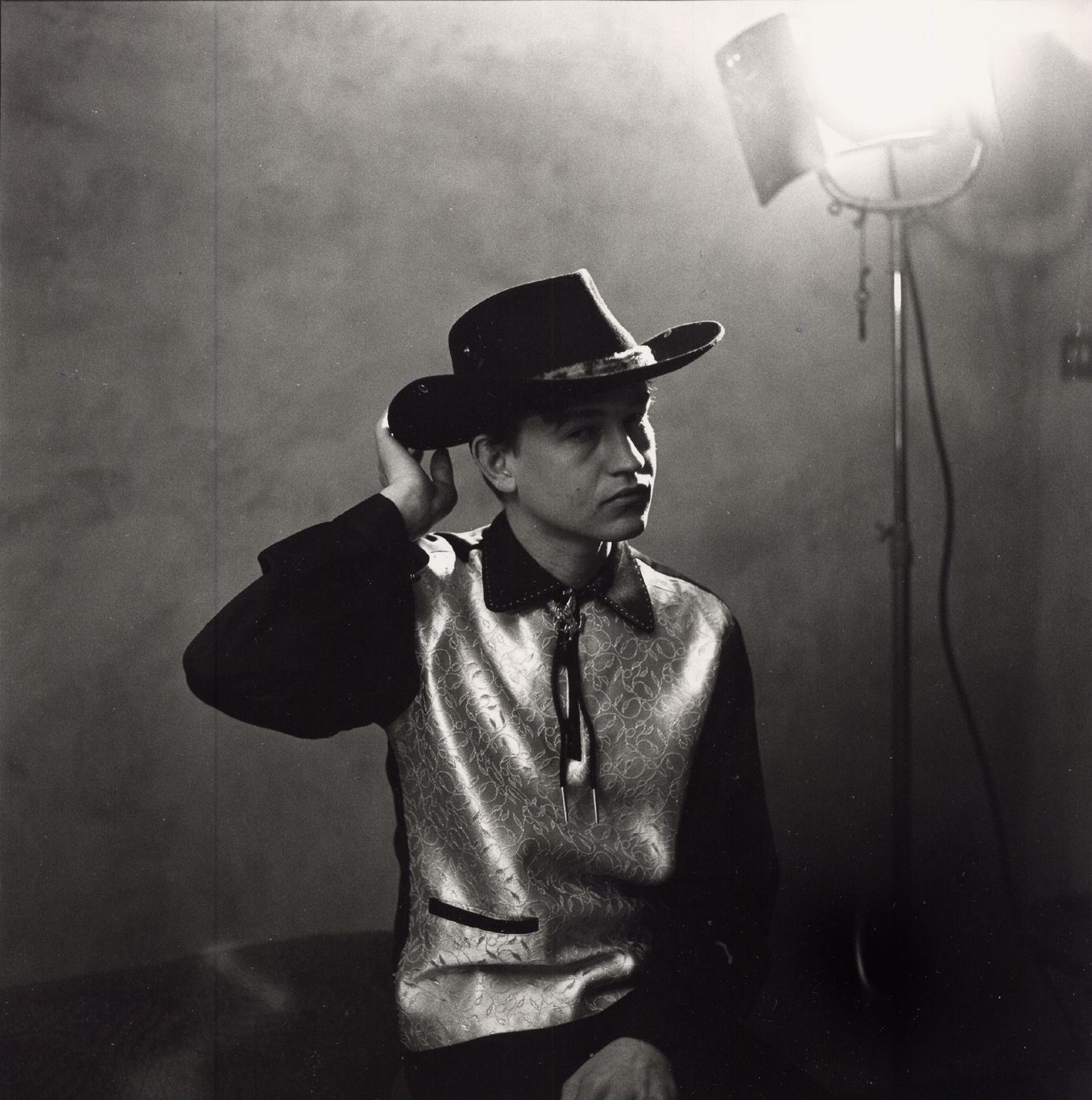
Robert Vickers : Mon souvenir de cette séance est assez vague. C’était un studio impressionnant, mais il y faisait froid comme dans tous les studios londoniens. On a donc l’air un peu mal à l’aise. Je sais que j’ai trouvé le chapeau que je portais au studio, mais j’ai encore la chemise que j’ai achetée sur Canal Street à New York. La séance s’est bien passée. C’était probablement notre premier shooting avec Amanda.
Quelle est ta chanson préférée de ce disque ?
Robert Vickers : Bye Bye Pride est en soit une chanson presque parfaite. Je me rappelle le jour où Grant l’a amenée au studio. J’ai eu la ligne de basse à la fin de notre première répétition. Tout est au bon endroit sur ce morceau. La cerise sur le gâteau est le hautbois d’Amanda.
The Go–Betweens – Bye Bye Pride
Et la tournée de Tallulah ?
Robert Vickers : Au début, nous nous sommes tous réunis et nous avons peint une toile de fond que nous pouvions utiliser sur scène. Nous avons consacré 50 livres à la peinture et nous y avons tous participé. Après des semaines de combats dans les studios, c’était simplement amusant. Nous l’avons également utilisée pour l’unique pochette de l’édition du vinyle de Bye Bye Pride. Je ne sais plus qui a eu l’idée, mais j’ai l’impression que c’est un bon exemple de l’influence qu’Amanda avait sur le groupe. Nous étions cyniques et quelque peu abattus par les circonstances à cette époque-là. Elle fut une bouffée d’air frais. Au-delà, je me suis rendu compte que j’étais encore vivant uniquement à la fin de la tournée.
Amanda Brown
Amanda Brown fut membre des The Go–Betweens entre 1986 et 1989. Après la dissolution du groupe en 1989, elle a travaillé avec une kyrielle de groupes (R.E.M., The Apartments, Silverchair).
Comment s’est déroulé l’enregistrement de ce disque ? Cela a été facile ? Il vous a pris du temps ?
Amanda Brown : De mémoire (on parle de quelque chose qui s’est passé il y a 30 ans), ce fut assez court. Nous ne disposions pas d’un grand budget et je me pense que nous avons passé uniquement quelques semaines dans un studio assez basique avec Richard Preston en guise de producteur. Mais nous avons passé beaucoup de temps dans la pré-production à répéter et à arranger les chansons. Lindy était très active pendant cette période. Elle et moi avons passé beaucoup de temps à travailler nos parties. Ils nous ont donc associé au niveau des parties rythmiques.
Pourquoi avoir travaillé avec Richard Preston et Craig Leon ?
Amanda Brown : Le groupe était désireux de travailler de nouveau avec Richard Preston car il avait fait du bon travail sur Liberty Belle & Black Diamond Express. C’était un homme charmant et doux qui était sympathique et qui rendait notre son singulier. Nous l’aimions beaucoup.
En 1987, l’industrie musicale considérait que les singles de l’album étaient très importants. Ils étaient diffusés donc on a dépensé énormément d’argent pour les enregistrer et pour tourner un clip. Les clips vidéo étaient vraiment coûteux et les maisons de disques payaient des gens pour que nos singles intègrent les playlists des radios. Notre maison de disques, Beggars Banquet, a payé Craig Leon une fortune pour produire Right Here et Cut It Out en tant que singles. Nous n’étions pas si heureux du résultat et personne dans le groupe n’a voulu que Cut It Out soit un single. Cette chanson reste une erreur dans le catalogue des Go–Betweens ! C’était une chanson qui aurait dû être une face B. Et encore.
Quels sont tes meilleurs souvenirs de l’enregistrement ?
Amanda Brown : L’enregistrement s’est déroulé sans aucun problème. Il n’y a pas eu de disputes si je me souviens bien. Pour moi, c’était génial parce que c’était la première fois que j’avais écrit mes propres parties pour les chansons. Auparavant, j’étais plutôt cantonnée à des arrangements comme pour ceux de Liberty Bell. J’ai expérimenté des idées comme mettre du hautbois sur Bye Bye Pride et ou chanter dans les aigus sur You Tell Me. L’étrange clavier de cette chanson est aussi une de mes idées ! Je suis également très friande des arrangements que j’ai fait avec Lindy sur The Clarke Sisters et sur The House That Jack Kerouac Built.
The Go–Betweens – The House Jack Kerouac Built
Et ce son… Comment l’avez-vous trouvé ?
Amanda Brown : D’une certaine manière, le son de Tallulah est très important. Il est assez mélodramatique et fort. C’est une caractéristique des productions des années 80, même s’il n’est pas aussi grandiloquent que celui des groupes de hard rock de cette époque. Les instruments que j’ai fait acheter au groupe – le violon et le hautbois – n’étaient pas des instruments de rock très courants et ils ont contribué à donner au disque un son assez singulier. Je n’écoute jamais mes anciens enregistrements, mais certains arrangements m’impressionnent toujours de par leur complexité et leurs détails. On peut aussi entendre quelques erreurs ou certains passages qui auraient pu sonner de bien meilleures manières. Je pense que nous étions en train de travailler sur le son de 16 Lovers Lane.
Comment vous êtes-vous retrouvés dans un studio de Camden Town ?
Amanda Brown : Je pense que Richard Preston connaissaient les gens de ce studio. Je ne m’en rappelle pas exactement.
Quelles ont été les difficultés liées à cet enregistrement ?
Amanda Brown : Je ne me souviens pas d’énormes difficultés. Nous avons apprécié la routine et nous avons cru que nous avions beaucoup de chansons. Être dans le studio d’enregistrement a toujours été ma partie préférée du processus, plus que la tournée et la promotion.
Pourquoi Mark Wallis a mixé ce disque ? Le groupe y a participé ?
Amanda Brown : Le groupe a d’abord mixé l’album avec Richard Preston et nous étions très heureux avec le résultat. Mais le label et sa direction ont évidemment cru que cela pouvait être meilleur (c’est-à-dire plus commercial) et ils nous ont envoyés dans un très beau studio avec ses propres appartements dans la campagne anglaise pour remixer avec Mark Wallis (qui était l’assistant de Steve Lillywhite). Mark était très compétent dans son rôle et il a emmené la musique à un autre niveau. Il avait également produit une chanson numéro un au Royaume-Uni appelé Crash de sorte qu’il était considéré comme quelqu’un de très important.
Quelle est ta chanson favorite ? Avez-vous abandonné des chansons pendant l’enregistrement ?
Amanda Brown : Les chansons abandonnées finissaient généralement sur les faces B de nos singles. Mes chansons préférées de Tallulah sont celles de Robert. Il explore de manière assez singulière des territoires uniques comme sur The House That Jack Kerouac Built our sur The Clarke Sisters. Qui a déjà évoqué les menstruations de deux sœurs dans une chanson pop ? La ligne d’ouverture de Spirit of a Vampyre est l’une de mes lignes préférées: « I was slowly dying in a clinic just outside of L.A. » J’aime aussi Bye Bye Pride pour ses mélodies et ses sentiments.
Quelles sont tes meilleurs souvenirs de Tallulah ?
Amanda Brown : Pour moi, la tournée à cette étape était encore une nouveauté. J’avais seulement 19 ou 20 ans quand j’ai rejoint les Go Betweens et je n’avais jamais vraiment voyagé à l’extérieur de l’Australie. C’était un rêve de visiter l’Europe et de rencontrer différentes cultures. Je me souviens que Berlin était particulièrement sauvage. C’était avant que le mur ne tombe et Berlin-Ouest était dans un grand état de décadence. Je pense que c’est ce qui a attiré tant de musiciens là-bas. Les boîtes de nuit étaient absolument fantastiques et la ville semblait être sophistiquée et très bohème. Le club où nous avons joué était dirigé par des punks de la vieille génération qui savaient faire passer des bons moments.
The Go–Betweens - Tallulah
Tallulah des The Go–Betweens est disponible via Beggars Banquet et a été réédité de nombreuses fois.
- Right Here
- You Tell Me
- Someone Else's Wife
- I Just Got Caught Out
- Cut It Out
- The House That Jack Kerouac Built
- Bye Bye Pride
- Spirit of a Vampyre
- The Clarke Sisters
- Hope Then Strife
Retrouvez les articles de la rubrique [1987-2017] :
English text
Amanda Brown
How easy was the recording process of Tallulah ? How long did it take you?
From memory (as it is 30 years ago!) we had a relatively short time to record Tallulah. We didn’t have a big budget and I think we had only a couple of week in a basic studio with producer Richard Preston. But we did spend a lot of time in pre-production rehearsing and arranging the songs. Lindy was proactive about rehearsing every day and she and I spent a lot of time working out our parts so they sat together rhythmically.
Why did you work with Richard Preston (the producer) ? Why did Craig Leon produce only two tracks ?
The band were keen to work with Richard Preston again after he did such a good job producing Liberty Belle and the Black Diamond Express. He was a lovely, gentle man who was sympathetic to our idiosyncratic sound and we all liked him personally.
1987 was an era when the music industry considered singles from the album to be very important. They still are with streaming – but back then a lot of money was invested in the single in terms of promotion and making a video. Video clips were really expensive and record companies paid people called record pluggers to try and get the singles playlisted. Our record company Beggars Banquest paid Craig Leon a substantial fee to produce Right Here and Cut It Out as singles. We weren’t that happy with the result and nobody in the band wanted Cut It Out to be a single. That song remains a blot on the Go Betweens copybook in my opinion! It was a throw away song that should have been a B-side at best.
What are your best memories of this recording process ?
The recording went smoothly – there were no disputes or arguments that I recall. For me it was great because it was the first time I wrote my own parts for the new songs. Previously I had been mostly playing existing arrangements from Liberty Belle. I experimented with ideas like putting the oboe on Bye Bye Pride and singing those crazy high operatic backing vocals in You Tell Me. The strange keyboard solo in that song is also me! I’m also very fond of the arrangements Lindy and I worked out for songs like The Clarke Sisters and The House That Jack Kerouac Built.
How did you find the sound of this album ?
In some ways the sound of Tallulah is very of it’s era. I think it’s quite melodramatic and big sounding – that was a hallmark of 80’s production – although it isn’t as bombastic as all those top 40 big hair bands. The instruments that I bought to the band – violin and oboe – were not common rock and roll instruments and they helped to give the record a distictive sound. I never listen to my old recordings but some of the arrangements still impress me with their intricacy and detail when I hear them. Other things I cringe at! You can hear some mistakes and things that could have been better. I think we were working towards a sound that would coalesce on the next album, 16 Lovers Lane.
Why did you choose to record this album in Camden Town ?
I think the producer Richard Preston had a relationship with the studio in Camden. I can’t remember exactly!
What were your difficulties during the recording process ?
I don’t recall immense difficulties. We enjoyed the routine and we believed we had a great bunch of songs. Being in the recording studio has always been my favourite part of the process, more so than touring and promotion.
Did the band mix the album ? Why did Mark Wallis remix the album ?
The band initially mixed the album with Richard Preston and we were all pretty happy with the result. But the record company and managment obviously believed it could be better (i.e more commercial) and sent us off to a very beautiful residential studio in the English countryside to remix with Mark Wallis who had been Steve Lillywhite’s assistant engineer. Mark was very skilled in the studio and he did take the music to another level. He had also just produced a number one song in the UK called Crash so he was considered to be hot property as a producer.
What’s your favorite song of this album ? Did you abandoned some songs during the recording ?
Abandoned songs usually ended up as B-sides of singles. My favourite songs are actually mostly Robert’s from Tallulah. He was exploring quite unique territory lyrically in songs like The House That Jack Kerouac Built and The Clarke Sisters. Who had ever sung about sisters menstruating in a pop song before? The opening line from Spirit of a Vampyre is one of my favourite lines – « I was slowly dying in a clinic just outside of L.A. » I also love Bye Bye Pride for its melodies and sentiment.
What were your best memories of the Tallulah tour ?
For me touring at that stage was still a novelty. I was only 19 or 20 when I joined the Go Betweens and I had never really travelled outside Australia. It was a dream to visit Europe and experience the different cultures. I remember Berlin at that time was particularly wild – it was before the wall came down and West Berlin had an incredible aura of decay and decadence. I think that’s what attracted so many musicians there. The night clubs were absolutely fantastic and the city seemed so sophisticated and bohemian. The club where we played was run by some older generation punks who really knew how to have a good time.
Robert Vickers
How easy was the recording process of Tallulah?
In my experience no Go–Betweens album was easy to record. Especially when you include the pre-production period when the songs were chosen and arranged. For a band like us who could not afford to spend months in the studio writing songs that was where a lot of the most important work was done.
The main problem with the recording of that album was that it had three producers. Craig Leon was hired to produce two singles “Right Here” and “Cut it Out”, which ultimately went on the album. Those were done first. “Right Here” was an obvious choice; it was a catchy pop song with a straightforward structure. “Cut it Out” was a gamble. It had a hook but it was a little funkier than other singles we’d done. It was also unrehearsed. We had already demoed “Right Here”, so had a good idea of how we wanted it to sound but had done no work on “Cut it Out”.
Doing singles separately from the album was common in the UK at the time. We had done it with “Bachelor Kisses” the first single from Spring Hill Fair. We weren’t entirely happy about it but we did wanted a single to chart and that seemed to be the way to go about it. Of course it didn’t help and caused even more problems. I believe that when you do singles this way you are effectively sacrificing the song. You are turning it over to a producer who is going to pretty much do whatever they want to make it a hit. That might not be what’s best for the song. In this case I felt that “Right Here” was indestructible. It was born to be a single played on the radio. “Cut it Out” on the other hand was an unknown. If we had kept it for the album sessions we might have made something better of it but we needed two singles so it seemed a reasonable choice. It had single potential and if it was going to be a failure (which it was) I preferred that to wasting better songs.
After five days of arranging the songs with Craig and his partner Cassell Webb we went in with Craig to record at Tony Visconti’s studio in London, Good Earth (now called Dean Street) on Dec 27th, 1986. First day was programing the drums and I did the bass on “Right Here”. The second day the bass on “Cut it Out” and guitars on both. Then three days of violin, keyboards and vocals. That alone would have been a lot of time for two tracks but then we did five more days of redoing vocals and mixing.
Having blown our budget on the singles we had to compromise on the studio for the rest of the album. I think the name was Easy Hire which was as unexciting as it sounds. We did the other eight tracks there. The preproduction at a rehearsal studio where we arranged the sounds was particularly stressful with lots of arguments but the recording wasn’t too bad. We did have to decide which songs to program the drums and which Lindy should play on her kit. We ended up with a mix but looking back I wish we had let her play all of them on the kit as real drums of course sound better.
Once it was mixed (at Rooster Studios) it became painfully obvious that the singles and the album tracks sounded quite different side by side. To fix this we convinced the label Beggars Banquet to allow us to remix most of the album tracks with another producer, Mark Wallis, who had worked with U2, at a fancy studio in the country, Ridge Farm. After that we thought it was closer to a cohesive sound but there was no way it could ever be as seamless as Liberty Belle. However because of what we felt was the success of that remix we hired Mark Wallis to produce 16 Lovers Lane, the next album.
Why did you work with Robert Preston (the producer) ? Why did Craig Leon produce only two tracks?
We had worked with Richard on Liberty Belle and The Black Diamond Express; in fact the title of that album came from the name of a band his father was in. We had co-produced that album with him and were happy with the results so hoped to repeat them. Craig Leon had just produced a UK hit and we wanted one so we could pay our rent. He was brought in to solely to get a hit.
What are your best memories of this recording process?
This album a lot of Robert’s songs were brought to the band in pieces, not as complete songs, so we got to do a lot a arranging. Putting the songs together rather than just writing our own parts. Also I always enjoyed the recording of Robert’s vocals. He always had multiple ways of delivering every line so it was fun to help find the right one. But ultimately the best memory is always hearing the completed songs in playback in the studio; when all the work you’ve done over months comes together in something real and lasting. In particular “Bye Bye Pride” was stunning. The way it builds into the payoff of Amanda’s oboe part at the end makes all the hardship and struggle of recording worth it and more.
How did you find the sound of this album?
We felt it was not as organic as the previous album, a little harsh perhaps. The sound is of its time; processed 1980s. It’s also our most schizophrenic album in that there is a real differences between Grant’s songs and Robert’s. Grant’s songs have programmed drums and more air in them. Robert’s are cold and dark, a little tortured and reflect more about how we felt living in London at that time.
What were your difficulties during the recording process?
This was our first time recording with Amanda and I felt I should give her some space in the arrangements so I kept my basslines a bit simpler on songs like “Hope Then Strife” and “Someone Else’s Wife”. In hindsight I realize this was unnecessary she had no problem finding her place regardless of what I was doing.
Where did you take the picture of the album cover? Do you remember the shooting with Peter Anderson?
My memory of that shoot is pretty foggy. It was an impressive studio but like most of London was very cold so we look a little uncomfortable. I know I found the hat I was wearing at the studio but I still have the shirt which I bought that on Canal St in New York. The shoot did go well though. It was probably our first with Amanda.
What’s your favorite song of this album?
It would have to be “Bye Bye Pride” which is an almost perfect song. I recall the day Grant brought it into the rehearsal studio. By the end of the first run through I had the complete bassline. Everything just fell into place for that track and Amanda playing the oboe was the icing on the cake.
What were your best memories of the Tallulah tour?
Right at the beginning we all got together and painted a backdrop we could use on stage. We spent 50 pounds on paint and all helped out. After weeks of fighting in studios it was just fun. We also used it on the cover of the 12 inch “Bye Bye Pride” single cover. I don’t know whose idea it was but I feel like it was an example of the influence Amanda had on the band. We were cynical and somewhat beaten down by circumstance by that time and she was a breath of fresh air.
Beyond that I would say the end, when I realized I was still alive.
Colin Lloyd Tucker
How did you meet The Go–Betweens ?
During the 1980s I worked a lot with Simon Turner, most notably perhaps on the Deux Filles project.
Simon invited me down to the studio where he was recording an album of pop songs that would be issued as ‘Royal Bastard’ by ‘The King of Luxemburg’. I sung harmony vocals on that. The engineer/co-producer was Richard Preston.
Shortly after this Richard began work on (what was to become) Tahulla.
He remember how our vocals had worked very well together on Simon’s record so asked us to come along and do more of the same.
What are your best memories of this recording process ?
I remember it being a lot of fun. The atmosphere was relaxed. As is usually the case when in the studio there was a lot of hanging about, so the pool table got a lot of use. I recall playing Amanda a lot at pool. She would do cartwheels and ‘flips’ around the table (she was very bendy)… I was amazed and distracted enough to lose regularly.
Do you remember the days of your recording process ? How easy was your recording process ?
Richard would set the track up, Grant and Robert were ever present in the control room. Whoever wrote the track that we were working on would give us an idea of what they were after and we would also make suggestions… sometimes I sang with just Simon and at other times we were joined by Amanda and Robert.
When we were done it was down to the nearby pub.
There was also a party at their flat to celebrate the albums completion that was great fun. The album cover photo was taken in that flat.
You did the backing vocals on how many songs ?
I think we ended up on 3 or 4 of the songs… I remember doing ‘You Tell Me’, I Just Get Caught Out and Bye Bye Pride…
What are your favorite songs of this album ?
I always had a soft spot for Grant’s Right Here. Also The Clark Sisters and You Tell Me.




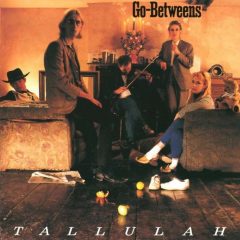
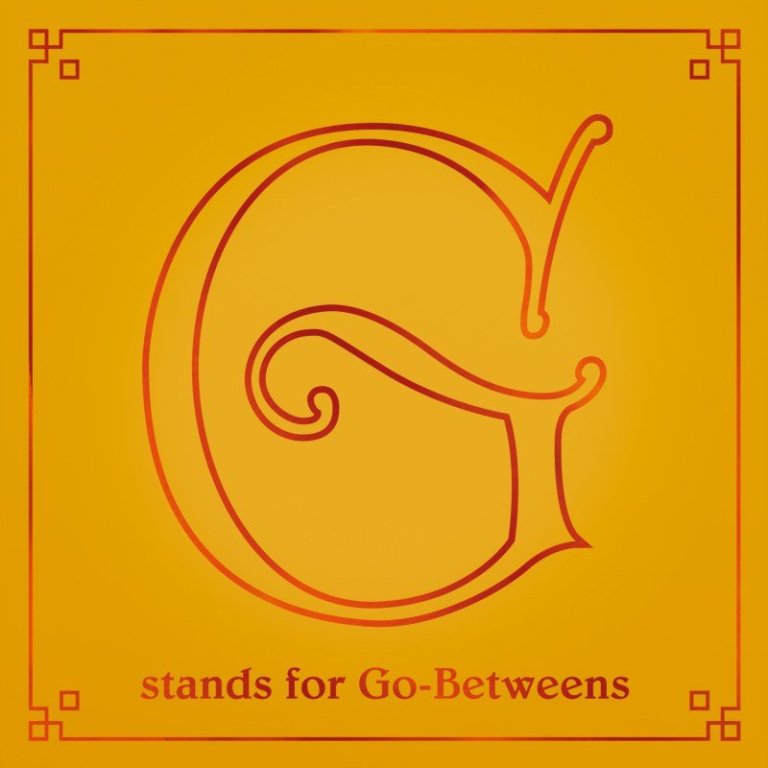
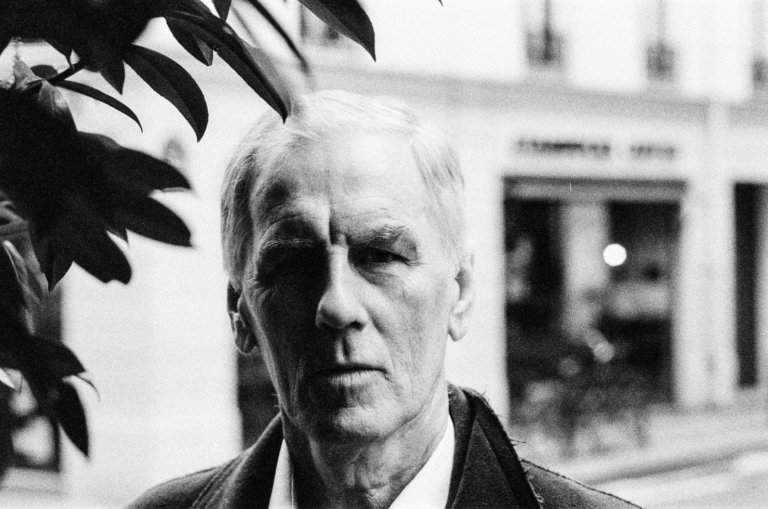
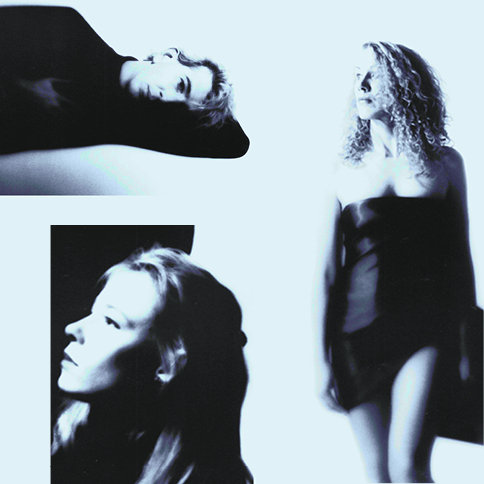
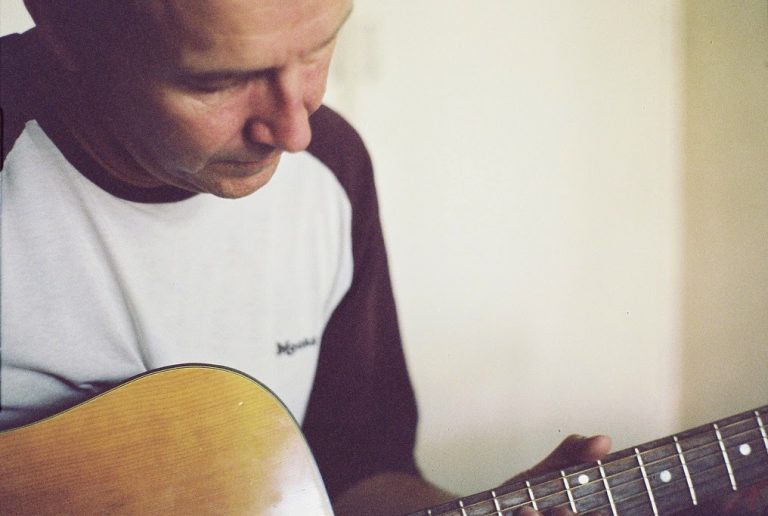
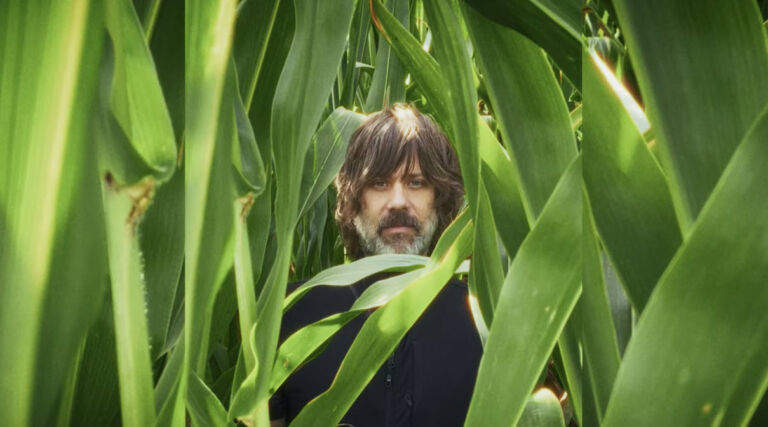
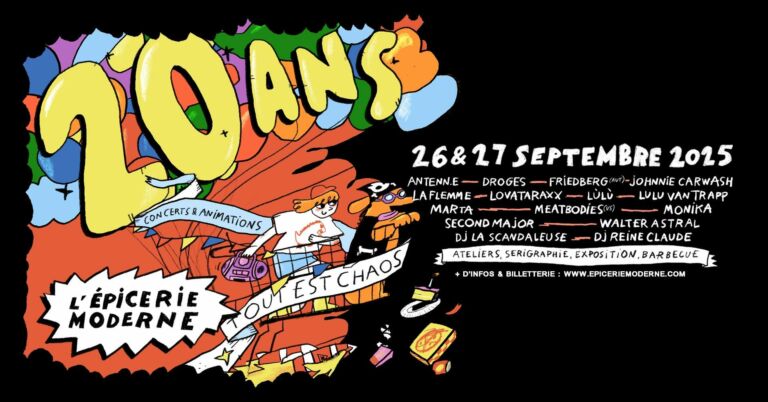
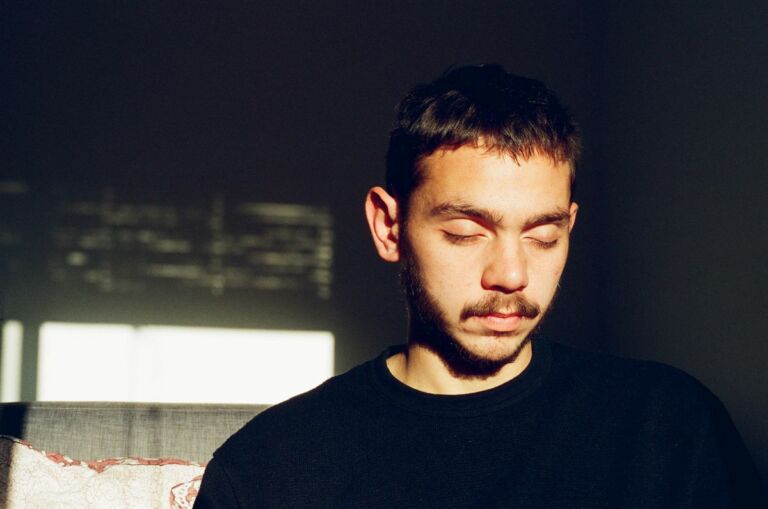
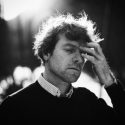 [30 ans] La forme olympique de French 79
[30 ans] La forme olympique de French 79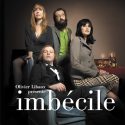 [2007 – 2017] Libaux présenta l’imbécile
[2007 – 2017] Libaux présenta l’imbécile
Magnifique article bravo
Merci !